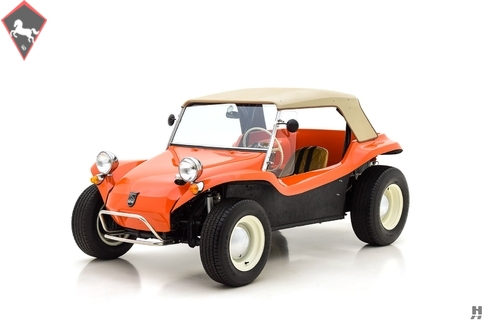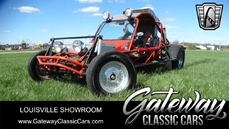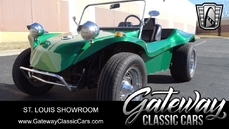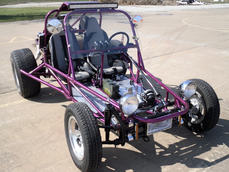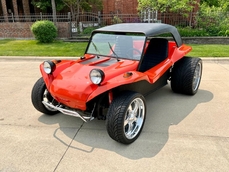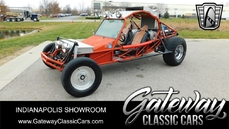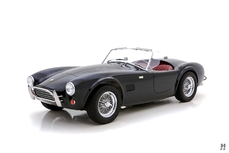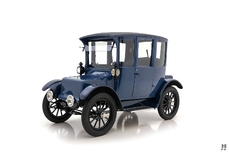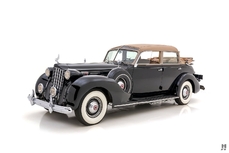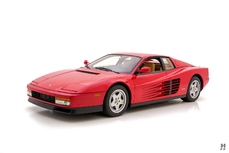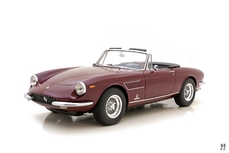Volkswagen Beach Buggy Dune Buggy 1966
General description :
In the 1960s, the fiberglass kit-car craze was taking hold in America. Versatile and cheap, fiberglass was getting easier for average enthusiasts to use, and custom car builders, racers, and hot rodders began turning to it as a viable alternative to sheet metal. Strong and light, it could be molded into virtually any shape imaginable and reproduced hundreds of times over. As a result, numerous small “cottage” manufacturers sprang up across the United States who offered pre-fabricated fiberglass car bodies that could transform otherwise mundane transport into an exciting and unique sports car. Glasspar was one of the first to hit the market with the G2 and they were later joined by companies such as Devin and Fiberfab who enjoyed quite a bit of success selling kits to adapt exotic bodies a wide variety of American or European chassis.
One of the most distinctive and unique kit-car projects came out of the California workshops of Bruce F. Meyers. Mr. Meyers was an engineer, boat builder, artist, tinkerer, surfer and amateur desert racer who would spark a kit-car craze of the 60s. Eschewing the typical sports car designs favored by other kit-car builders, Meyers designed and built a VW-based dune-buggy that was equally at home on the beach, the street, or racing through the desert. Drawing on his boat building experience, the first Meyers dune buggy was built using a dramatically shortened VW Beetle platform fitted with a fiberglass monocoque body and a mix of VW and Chevy truck suspension. He named it “Manx” after the stubby, short-tailed Manx cat. Donor Beetles were cheap, plentiful and could be easily tuned to give the light and nimble Manx astonishing performance both on and off-road. Bruce Meyers’ little buggy made headlines in 1967 when it scored a surprise win at the 1967 Mexican 1000 desert race (the predecessor to the Baja 1000). Sales exploded and soon scores of copies began flooding the market, and the dune buggy craze had taken off. Despite the copycats, the original Meyers Manx remains a cult-classic, and authentic early examples are prized by enthusiasts and collectors alike.
This delightful Meyers Manx is a verified original example complete with a certificate of authenticity issued by the Meyers Manx Registry. Presented in classic orange and black with a tan roof and interior, this is fabulous representation of the iconic, quintessential dune buggy. Out of long-term family ownership, this fully restored Manx presents in excellent condition, with very good paintwork both inside and out, and a number of charming period details. It features many original Manx options such as front and rear bumpers, a removable hardtop, and wind wings. The classic raked stance is achieved through “big and little” steel wheels, widened to accommodate 205/70-14 radials up front with fat 225/70-15 radials in the rear. The wheels wear dog dish VW hubcaps and have been beautifully finished in cream to provide a pleasing accent to the orange paint.
Power comes from a recently-built 1835 cc “big bore” VW engine that features a counterweight crank, Crane camshaft, CB Performance cylinder heads and dual Solex carburetors. The “go” is given some “show” courtesy of body color engine shrouds, EMPI valve covers and a ceramic coated sports exhaust system. The engine runs strong and emits an addictive bark, sending power through a VW 4-speed transaxle equipped with an EMPI shifter.
The joy of any Meyers Manx lies in its simplicity, and this example captures that with its pure, period correct nature. The interior consists of little more than a pair of fixed-back bucket seats trimmed in tan vinyl, and the just the basic controls you need for road use, and nothing else to distract you from the joy of driving. Instrumentation includes the OEM VW speedo cluster, along with VDO secondary gauges and a period correct Sun Super Tach.
Driving the Manx is an absolute blast: The engine makes ample power, and the short wheelbase and lively, direct steering give it kart-like responses. This certified original Manx is an outstanding example and whether you’re in a show, on the road or cruising the beach, it is ready to deliver on the Meyers promise of “More Smiles per Mile”.
https://hymanltd.com/vehicles/6070
1966 Volkswagen Beach Buggy Dune Buggy is listed sold on ClassicDigest in St. Louis by Mark Hyman for $58500.
Car Facts
Car type : Car Make : Volkswagen Model : Beach Buggy Model Version : Dune Buggy Engine size : 0.0 Model Year : 1966 Sub type : Convertible Location : Missouri
Sold
Seller Information
Sold
People who viewed this Volkswagen Beach Buggy also viewed similar Volkswagen listed at ClassicDigest
Other cars listed for sale by this dealer
About Volkswagen
The Volkswagen story is indeed an intriguing tale of innovation, resilience, and post-war revival, marked by various models that have become iconic in automotive history.The People's Car (Volkswagen): Initially envisioned by Adolf Hitler in the 1930s as a "people's car" or "Volkswagen" in German, the idea was to create an affordable and practical vehicle for the German people. This concept led to the development of the Volkswagen Beetle (or the Type 1), designed by Ferdinand Porsche.
Post-War Challenges: After World War II, Volkswagen faced significant challenges. The factory was heavily damaged, and the brand's association with the Nazi regime led to a lack of interest in the car in some regions.
British Intervention - The British Army & Ivan Hirst: The British Army took control of the factory in the immediate post-war period. Major Ivan Hirst, a British Army officer, played a crucial role in reviving Volkswagen. He recognized the potential of the Beetle and advocated for its production, convincing the British military to order several thousand cars. This decision helped jumpstart the brand's revival.
Export Success and the Beetle's Global Appeal: The Beetle gained popularity not only in Germany but also globally, becoming an icon of affordable motoring. Its simple, reliable design and unique appearance made it a favorite among consumers worldwide.
Model Evolution: Over the years, Volkswagen introduced various models alongside the Beetle, each contributing to the brand's growth:
Type 2 (VW Bus or Transporter): Introduced in the 1950s, it became an iconic symbol of the hippie movement in the 1960s, loved for its spaciousness and versatility.
Golf (Rabbit in the U.S.): Launched in the mid-1970s, the Golf (or Rabbit in the U.S.) marked a shift towards front-wheel-drive, modern design, and hatchback practicality, becoming a cornerstone of the brand's success.
Passat, Jetta, and Other Models: Volkswagen expanded its lineup with models like the Passat and Jetta, catering to different market segments.
Challenges and Innovations: Despite success, Volkswagen faced challenges, including quality issues in the 1970s. However, the brand continued to innovate and develop new models and technologies.
Rise of the GTI and Global Expansion: The 1980s saw the rise of the iconic Golf GTI, a high-performance version that sparked the hot hatch trend. Volkswagen also expanded its global presence during this period.
The British intervention in reviving Volkswagen after World War II played a pivotal role in the brand's resurgence. While there might have been some tensions or competition among automotive companies in the 1950s and 1960s due to Volkswagen's post-war success, the brand's ability to produce innovative and popular models solidified its place in automotive history.
